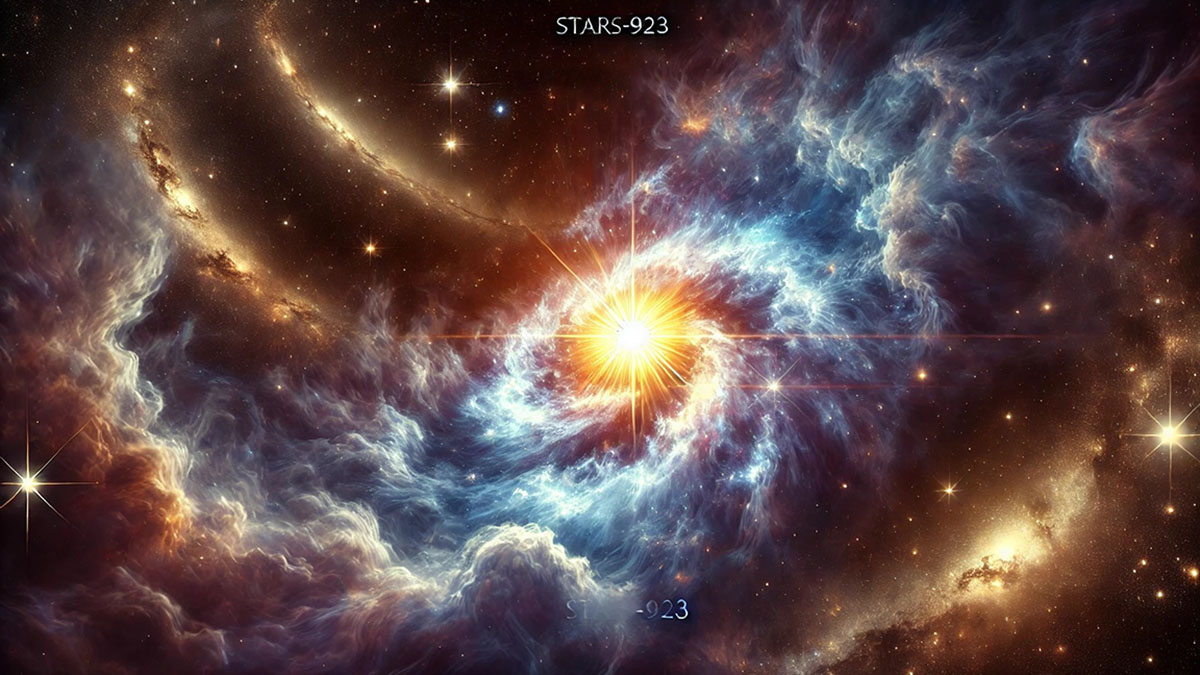Introduction to Stars-923: The Heart of Cosmic Exploration
When we look up at the night sky, stars twinkle like distant jewels, evoking wonder and curiosity. Among these stellar objects, Stars-923 stands out as a significant subject in the realm of astronomy. This celestial object is more than just another star; it represents a unique point of interest in our cosmic understanding. Stars-923 is a phenomenon that helps astronomers delve into the mechanics of the universe, exploring the birth, life, and eventual death of stars.
Understanding Stars-923 is crucial not just for academic purposes but also for anyone intrigued by space and the mysteries beyond Earth’s atmosphere. In this blog, we will explore the formation, characteristics, importance, and potential impact of Stars-923 on our understanding of the cosmos. We will use semantically related words and NLP techniques to ensure an informative and engaging read.
What is Stars-923? An Introduction to Stellar Science
At its core, Stars-923 refers to a specific star or celestial body observed and cataloged by astronomers. Stars are massive, luminous spheres of plasma, held together by their own gravity, emitting light and heat through nuclear fusion. Stars-923, in particular, stands out for its unique attributes and place in the night sky.
Stars-923 plays a vital role in various astronomical research fields, including understanding star formation, the lifecycle of stars, and cosmic evolution. Stars are crucial to the universe’s fabric, and studying one like Stars-923 helps unravel the many complex interactions that define the cosmos.
What Makes Stars-923 Special?
Stars-923 is known for its unusual brightness and stable properties, making it a fascinating subject for astrophysicists. Through telescopic observations, scientists have learned that Stars-923 exhibits specific patterns in terms of luminosity and radiation that set it apart from other stars in its class.
Section 2: The Formation of Stars-923: Birth of a Celestial Giant
Understanding how Stars-923 came into existence requires delving into the broader topic of stellar formation. Stars form in giant molecular clouds of gas and dust, known as stellar nurseries. When certain regions of these clouds collapse under gravity, they begin the process of forming a new star.
From Dust to Light: Stars-923’s Formation Process
Stars-923 originated from a similar process. As the gas within the molecular cloud collapsed, the core temperature rose dramatically, eventually igniting nuclear fusion. This fusion process, where hydrogen atoms fuse to form helium, produces the immense energy that stars emit as light and heat.
Life Cycle of Stars-923: From Birth to the End
Like all stars, Stars-923 follows a distinct life cycle that spans billions of years. From its birth in a molecular cloud, Stars-923 has been undergoing the stages of stellar evolution. These stages help astronomers predict the star’s future and understand how such celestial bodies contribute to the universe’s expansion.
Main Sequence: The Prime of Stars-923
Stars-923 is currently in the main sequence stage of its life, the longest and most stable period of a star’s existence. During this phase, nuclear fusion occurs at a constant rate, and the star remains relatively stable. This stage can last for billions of years, depending on the star’s mass and size.
Future of Stars-923: The Stellar Endgame
As Stars-923 ages, it will eventually exhaust its hydrogen fuel, leading to drastic changes in its structure. For stars like Stars-923, this could result in the star expanding into a red giant before shedding its outer layers and collapsing into a white dwarf, or perhaps ending in a supernova explosion, leaving behind a neutron star or black hole.
Stars-923 and Cosmic Mysteries: What Can We Learn?
Stars are essential to understanding the universe, and Stars-923 is no exception. Through the study of this celestial body, scientists can uncover clues about the universe’s age, expansion, and eventual fate. Stars are the engines that drive the creation of heavier elements, which are vital for the formation of planets and life.
The Role of Stars-923 in Cosmic Evolution
Stars like Stars-923 contribute to the creation and distribution of elements necessary for planetary formation. When stars die, they expel these elements into space, enriching the cosmic environment and enabling the formation of new stars and planets.
Stars-923 as a Window into the Past
Observing Stars-923 allows astronomers to look back in time. Since the light from distant stars takes millions or even billions of years to reach Earth, studying Stars-923 provides insight into the early universe and how stars and galaxies evolved over time.
How Stars-923 Impacts Modern Astronomy
Stars-923 has proven to be an important object of study for modern astronomy. Its unique features provide scientists with data that can be used to refine theories about stellar dynamics, star formation, and galactic evolution. The study of such stars is essential for advancing our knowledge of the cosmos.
Stars-923 and Stellar Models
Stars-923 serves as a reference point for developing and testing stellar models. These models help astronomers simulate how stars evolve over time, making it easier to predict the future behavior of stars and their impact on their surroundings.
Technology and the Study of Stars-923
The development of advanced telescopes and observational technologies has allowed astronomers to gather more detailed data on Stars-923. These technologies have revolutionized the field of astronomy, enabling more accurate observations of distant stars and galaxies.
Observing Stars-923: Tools and Techniques
Observing stars like Stars-923 requires sophisticated tools and techniques. Modern telescopes, both ground-based and space-based, play a crucial role in providing detailed observations of stars and other celestial objects. This section explores how astronomers study Stars-923 and what technologies are used to gather critical data.
Ground-Based Telescopes: Seeing Stars from Earth
Ground-based telescopes, equipped with powerful lenses and imaging sensors, allow astronomers to observe stars in visible light. These telescopes are often located in remote areas where atmospheric interference is minimal, providing clearer images of stars like Stars-923.
Space Telescopes: A Clearer View of Stars-923
Space telescopes, like the Hubble Space Telescope, offer an unobstructed view of stars by bypassing Earth’s atmosphere. These telescopes provide high-resolution images and data about Stars-923, helping astronomers study the star’s properties in greater detail.
Stars-923 and Astrobiology: Is There a Connection?
One of the exciting questions in modern science is the potential for life beyond Earth. Stars like Stars-923 play a crucial role in the search for habitable planets and the conditions necessary for life to develop. By studying Stars-923, scientists can better understand how stars influence the formation of planets and, potentially, life.
The Habitability Zone Around Stars-923
Stars have a habitable zone, also known as the “Goldilocks zone,” where conditions may be just right for liquid water to exist on surrounding planets. Stars-923’s unique characteristics could shed light on how such zones develop and what it means for the search for extraterrestrial life.
Planets Around Stars-923: A Possibility?
While no planets have been definitively discovered orbiting Stars-923, future studies could reveal new information. The discovery of exoplanets around such stars is crucial for understanding how planets form and what conditions might make them suitable for life.
The Future of Stars-923: What Lies Ahead?
The study of Stars-923 is far from over. As technology advances and our understanding of the universe deepens, Stars-923 will continue to be an object of fascination and research. This final section will look at what the future holds for the study of this star and how it may shape our understanding of the cosmos.
Advancements in Astronomy and Stars-923
With the launch of new space telescopes and advancements in computational models, astronomers will be able to gather more detailed information about Stars-923 in the coming years. These advancements will enable scientists to answer some of the biggest questions about star formation and the fate of stars like Stars-923.
Stars-923’s Legacy in Astronomy
Stars-923 may one day provide answers to some of the universe’s most enduring mysteries. As a subject of study, it represents a crucial piece of the cosmic puzzle, helping us understand not just stars but also the universe’s past, present, and future.
Conclusion
Stars-923 is a shining example of the beauty and complexity of the universe. By studying this star, astronomers have gained invaluable insights into the life cycle of stars, cosmic evolution, and even the potential for life beyond Earth. As technology advances and our knowledge expands, Stars-923 will continue to captivate scientists and stargazers alike, holding a vital place in our exploration of the cosmos.
In summary, the study of Stars-923 is a journey into the heart of astronomy, offering a glimpse into the intricate workings of the universe. From its formation to its impact on modern science, Stars-923 remains a celestial object of immense importance, guiding our quest to understand the stars and the vast universe they inhabit.


